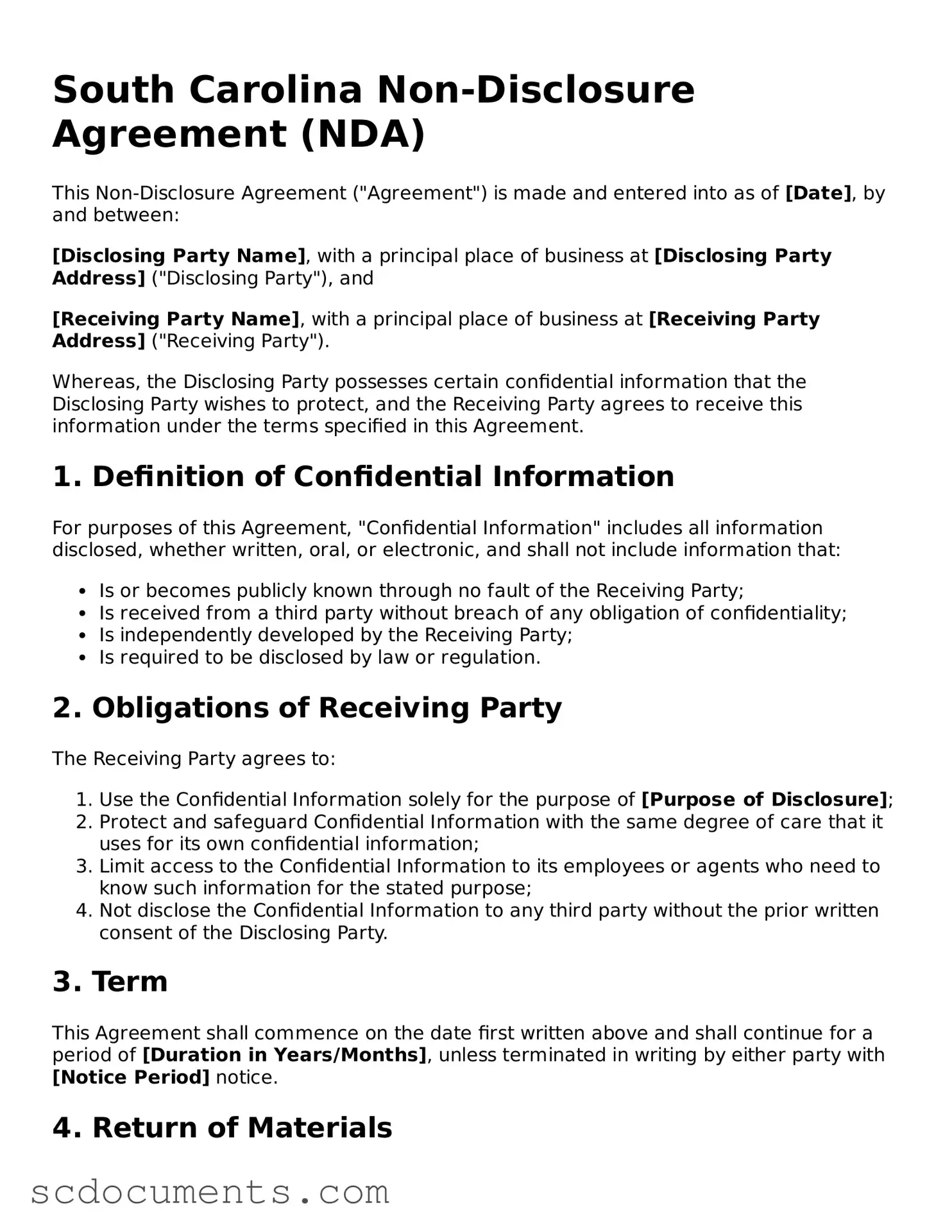Legal South Carolina Non-disclosure Agreement Form
A South Carolina Non-disclosure Agreement (NDA) is a legal document designed to protect confidential information shared between parties. This agreement establishes the terms under which sensitive information can be disclosed and ensures that it remains confidential. By signing an NDA, individuals or businesses can safeguard their proprietary information from unauthorized use or disclosure.
Access My Non-disclosure Agreement
